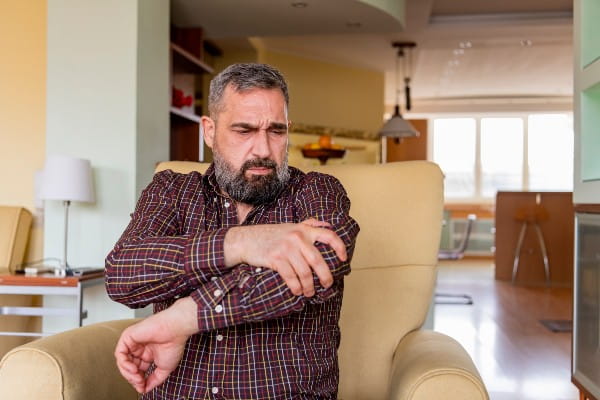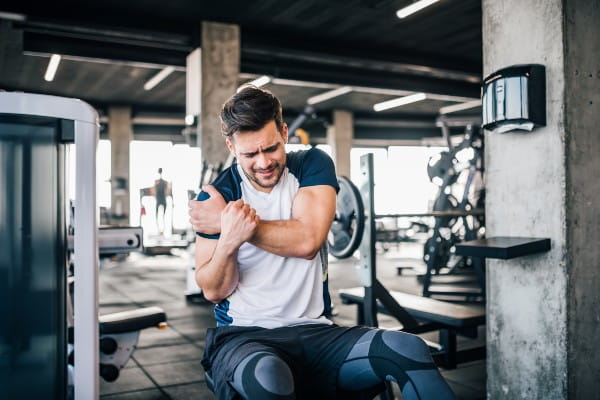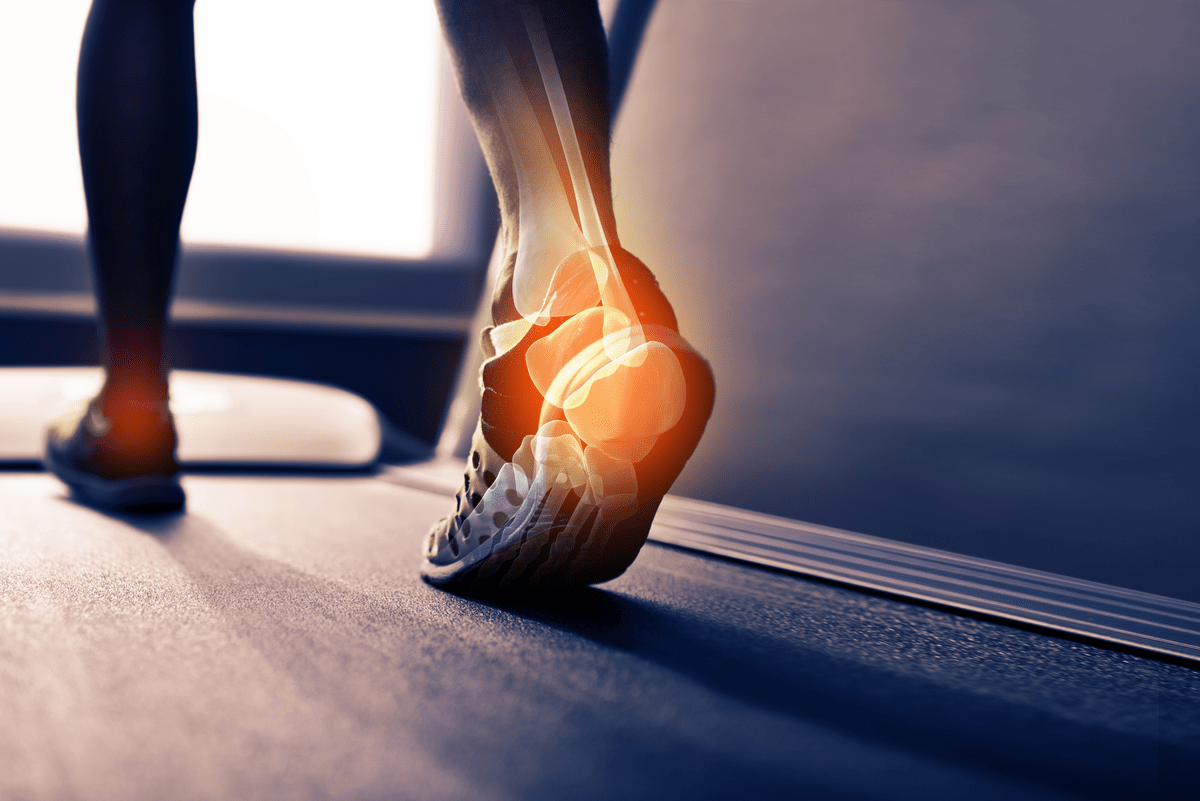It’s moving day, and you’re carrying the last of the heavy boxes upstairs when suddenly you hear a “pop” at your elbow. You drop the box in pain and notice the instant swelling. You’ve probably just torn the tendon.
“A tendon tear at the elbow is not very common,” says Orthopedic Surgeon Barbaro J. Perez, M.D. , with Riverside Orthopedic and Sports Medicine Specialists Gloucester . “It usually occurs when your elbow was forced straight due to a significant increase in pressure on your bicep. When this added weight straightens your arm, it tears your tendon away from the bone. More often when patients complain of elbow pain, they’ve damaged, (rather than torn) the tendon by repeatedly making the same motion, typically by playing certain sports.”
“The two most common types of elbow pain are lateral epicondylitis, commonly called tennis elbow, and medial epicondylitis, known as golfer's elbow,” adds Orthopedic Surgeon Steven J. Hospodar, M.D., also with Riverside Orthopedic and Sports Medicine Specialists Gloucester.
Drs. Perez and Hospodar explain the various symptoms and treatments for elbow pain.
Symptoms of damaged or torn tendons at the elbow
“You can usually hear the sound of your tendon tearing, but when you bruise your tendon, you won’t hear anything,” Dr. Perez describes.
Other symptoms of a torn tendon include:
- Severe pain that may decrease in a week or two
- Swelling or bruising in the elbow and forearm
- Difficulty bending your elbow or twisting your forearm
- A lump in the upper part of the arm
- A gap in the front of the elbow
The symptoms of a bruised tendon appear more gradually. Tennis and golfer's elbow can both occur in painters, carpenters, butchers, or others whose jobs feature a similar, repetitive motion. The biggest difference is that pain from tennis elbow occurs on the outside of your elbow while golfer’s elbow is on the inside. Another major symptom is pain or weakness that makes it difficult to shake hands, turn a doorknob or hold a cup.
Nonsurgical elbow treatments
If you’ve torn your tendon, your doctor may recommend nonsurgical treatments to reduce pain and maintain as much arm function as possible, depending on your age and your goals for the level of activity you desire. Treatment can include:
- Resting your arm
- Temporary sling
- Nonsteroidal anti-inflammatory medications, like ibuprofen, to reduce pain and swelling
- Physical therapy
Symptoms of tennis and golfer's elbow usually disappear on their own after a few months by simply resting your arm. You can accelerate your healing with stretching and strengthening exercises or by wearing a brace or strap. Therapy and massage may also help.
Elbow tendon surgery
If your tendon was torn, you’ll likely need surgery.
“We prefer to perform surgery during the first two to three weeks,” says Dr. Hospodar. “If we wait, then the tendon and muscle begin to scar and shorten and it might not be possible to restore arm function.”
Surgery is rare for golfer’s and tennis elbows. It’s only considered if nonsurgical treatments didn’t work or if your symptoms are disabling.
After surgery, almost all patients will regain their full range of motion and strength once they’ve completed several months of rehabilitation.
To learn what’s causing your elbow pain and get proper treatment, schedule an appointment with your doctor.



